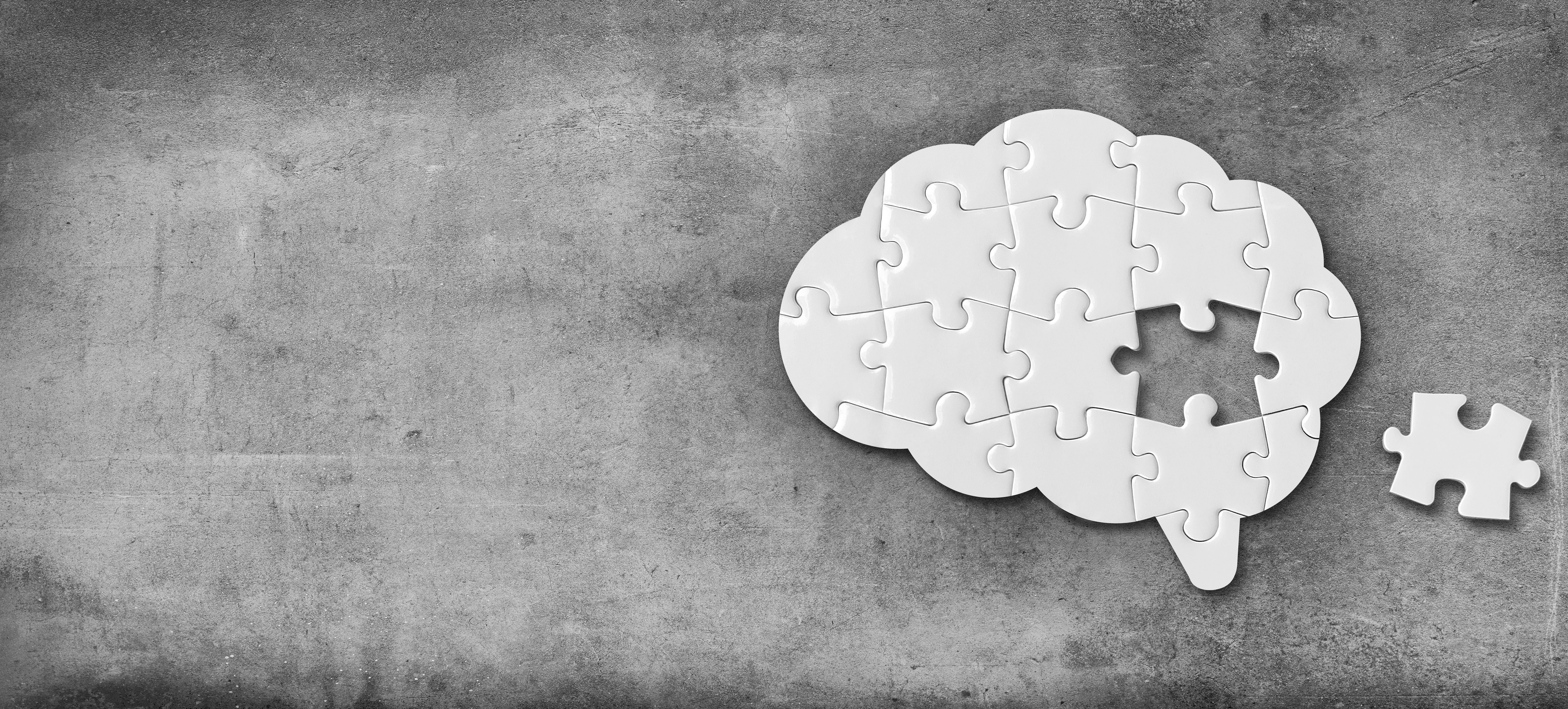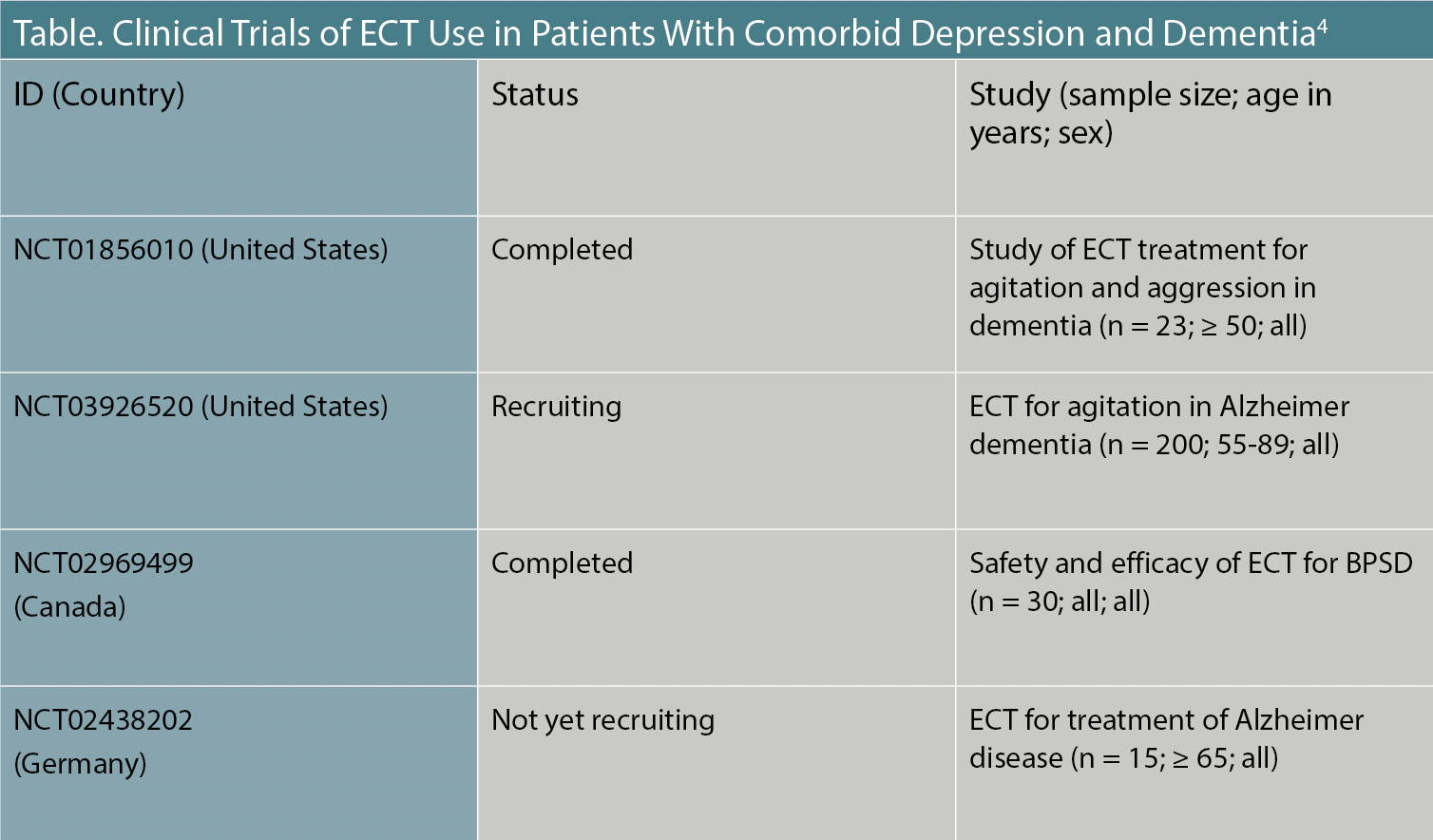News
Article
Electroconvulsive Therapy in Individuals with Behavioral and Psychological Symptoms of Dementia
Author(s):
What is the efficacy of ECT for the treatment of dementia?
ytemha34_AdobeStock

Dementia is one of the most debilitating aging-related neurodegenerative disorders. More than 6 million adults live with dementia in the United States, and both incidence and prevalence rates of dementia are expected to rise rapidly because of aging trends.1
The risk of dementia doubles every 5 years after aged 65 years, increasing to nearly 50% among adults 90 years or older.2 Individuals with dementia frequently experience behavioral and psychological symptoms, including depression, apathy, agitation, irritability, delusions, and hallucinations.
There are currently no treatments approved by the US Food and Drug Administration to manage behavioral and psychological symptoms of dementia. Nonpharmacological behavioral interventions are often recommended, but these can be difficult to implement in a standardized way and require substantial resources.
Electroconvulsive therapy (ECT) has been shown to be very effective as a treatment for severe depression (without dementia).3 Some clinicians have used ECT as a therapy in severe cases to manage behavioral and psychological symptoms of dementia. Here we review the evidence for the use of ECT to treat behavioral and psychological symptoms associated with dementia.
Randomized Trials
For any proposed therapy or intervention, the gold-standard level of evidence comes from randomized, controlled trials. As of October 23, 2023, there were no completed randomized trials of ECT in patients with dementia. A list of clinical trials of ECT use in patients with comorbid depression and dementia is in the Table.4
Table. Clinical Trials of ECT Use in Patients With Comorbid Depression and Dementia4

An ongoing, multisite trial (NCT03926520) in which patients with dementia are randomly assigned to ECT or other interventions proposes to enroll 200 patients and aims to be completed by 2024.
There have been 2 prospective, nonrandomized (single group) trials of ECT in dementia that have been completed. In one of these studies, patients were enrolled prospectively and were all treated with ECT. This study (NCT01856010) enrolled inpatients with dementia complicated by severe agitation and aggression who did not benefit from either pharmacological or nonpharmacological interventions. Most of these patients (78.3%) exhibited significantly reduced agitation from baseline to discharge as measured by the Cohen-Mansfield Agitation Inventory,5-7 a common assessment of agitation in dementia.
The neuropsychiatric inventory8,9 scores also significantly decreased from baseline to discharge, indicating an improvement in (P < .001). Further, the Clinical Global Impressions scale10,11 scores changed from a rating of “markedly agitated/aggressive” at baseline to a rating of “borderline agitated/aggressive” at discharge. There was no change in functioning (activities of daily living) before or after ECT. A total of 4 out of 23 patients discontinued treatment, with 3 patients stopping because of adverse events (2 for confusion/delirium, 1 for atrial fibrillation) and 2 patients stopping because of poor clinical response.4
Another recently completed study (NCT02969499) recruited 33 individuals with dementia who were treated with ECT. In this study, patients exhibited improvement in neuropsychiatric functioning a week following a course of ECT and an improvement in agitation 8 weeks following ECT. There was no discernible worsening in cognitive functioning or dementia symptoms.
Retrospective Analyses
Many reports of the use of ECT for comorbid dementia and depression or for behavioral and psychological symptoms of dementia are in the form of a case series.12,13 Rao and Lyketsos14 reviewed medical records of 31 patients with primary dementia who also experienced depression. Compared with before ECT, these patients had lower depression severity scores (12.3 points on the Montgomery-Åsberg Depression Rating Scale) and an overall improvement on the Folstein Mini-Mental State Examination (1.6 points; P < 0.02).14
One of the larger studies of the use of ECT in patients with depression and dementia was conducted using Medicare claims data. In this study, 145 patients who received ECT were matched to a control cohort (N = 415) with respect to age, sex, principal diagnosis, medical comorbidities, and baseline scores of activities of daily living. All patients were hospitalized initially and followed for up to 1 year after discharge.
This study found that, among those with dementia who were admitted to the hospital for a psychiatric problem, all patients generally declined in their functional status following discharge. Those patients receiving ECT had more favorable summary scores of activities of daily living compared with the control cohort, although the effects were small.
Of note, those receiving ECT did not experience differential worsening in their cognitive function.15 This is in line with another recent retrospective study of 313 ECT patients with baseline mild to moderate cognitive impairment, which showed an improvement in cognitive functioning as measured by the Montreal Cognitive Assessment.16 This finding concurs with an older report of 44 patients with mild cognitive impairment or dementia who underwent ECT and showed no worsening in cognitive deficits irrespective of preexisting cognitive status.17
Clinical Considerations
Given the lack of effective therapies for the behavioral and psychological symptoms of dementia on those with mild cognitive impairment and the profound burden that these symptoms cause to patients and families, it is reasonable to use ECT in select cases. In each case, a thorough analysis of the potential benefits and risks of therapy needs to be conducted and discussed with consenting parties. A few clinical considerations are worth mentioning.
First, the issue of consent is paramount. The laws governing consent for ECT are administered at the state level, which means requirements vary considerably across the United States. A thorough and legal consent process needs to be carried out prior to therapy, including an appeal to judicial authorities where required. Careful consideration must be given to the level of cognitive impairment and how this affects the patient’s ability to consent, as well as to local laws and regulations.
Second is the consideration of comorbid medical issues. Individuals with dementia and cognitive impairment are often advanced in age and have many medical comorbidities. For some older individuals of a frail medical status, an acute series schedule of 2 treatments per week (as opposed to 3 times per week) can allow for a more tolerable treatment course.
Another consideration involves the management of airway. Sometimes patients with dementia have difficulty managing secretions. The judicious use of an anticholinergic medication (eg, glycopyrrolate) can help improve the safety of airway management during the peri-procedural time.
Concluding Thoughts
Large database analyses of thousands of patients have essentially ruled out the possibility that ECT causes dementia.18,19 Further research involving smaller groups of patients with dementia or cognitive impairment has also supported the reassuring conclusion that ECT does not worsen baseline dementia or cognitive impairment. In fact, some data suggest an improvement in cognitive function following ECT.
Where resources are available, where patient and family preferences and clinical considerations provide, and when potential benefits outweigh the risks, ECT can be considered in select cases to manage the behavioral and psychological symptoms of dementia.
Dr Rhee is an associate professor of medicine (psychiatry) and public health sciences in the Department of Public Health Sciences at the University of Connecticut School of Medicine and is an adjunct faculty member in the Department of Psychiatry at Yale School of Medicine. Dr Wilkinson is an associate professor of psychiatry and associate director of the Yale Depression Research Program, Psychiatry, at Yale School of Medicine.
References
1. Alzheimer’s Association. 2018 Alzheimer’s disease facts and figures. Alzheimers Dement. 2018;14:367-425.
2. Byers AL, Yaffe K. Depression and risk of developing dementia. Nat Rev Neurol. 2011;7(6):323-331.
3. Jaffe R. The Practice of Electroconvulsive Therapy: Recommendations for Treatment, Training, and Privileging: A Task Force Report of the American Psychiatric Association. 2nd ed. American Psychiatric Publishing; 2001.
4. Acharya D, Harper DG, Achtyes ED, et al. Safety and utility of acute electroconvulsive therapy for agitation and aggression in dementia. Int J Geriatr Psychiatry. 2015;30(3):265-73.
5. Cohen-Mansfield J, Billig N. Agitated behaviors in the elderly. I. A conceptual review. J Am Geriatr Soc. 1986;34(10):711-721.
6. Cohen-Mansfield J. Agitated behaviors in the elderly. II. Preliminary results in the cognitively deteriorated. J Am Geriatr Soc. 1986;34:722-727.
7. Kupeli N, Vickerstaff V, White N, et al. Psychometric evaluation of the Cohen-Mansfield Agitation Inventory in an acute general hospital setting. Int J Geriatr Psychiatry. 2018;33(1):e158-e165.
8. Cummings JL, Mega M, Gray K, et al. The Neuropsychiatric Inventory: comprehensive assessment of psychopathology in dementia. Neurology. 1994;44(12):2308-2314.
9. Cummings JL. The Neuropsychiatric Inventory: assessing psychopathology in dementia patients. Neurology. 1997;48(suppl 6):S10-16.
10. Guy W. ECDEU Assessment Manual for Psychopharmacology. National Institute of Mental Health; 1976.
11. Schneider LS, Olin JT. Clinical global impressions in Alzheimer’s clinical trials. Int Psychogeriatr. 1996;8(2):277-290.
12. Oudman E. Is electroconvulsive therapy (ECT) effective and safe for treatment of depression in dementia? a short review. J ECT. 2012;28(1):34-38.
13. Tampi RR, Tampi DJ, Young J, et al. The place for electroconvulsive therapy in the management of behavioral and psychological symptoms of dementia. Neurodegener Dis Manag. 2019;10.2217/nmt-2019-0018.
14. Rao V, Lyketsos CG. The benefits and risks of ECT for patients with primary dementia who also suffer from depression. Int J Geriatr Psychiatry. 2000;15(8):729-735.
15. Wilkinson ST, Sint K, Forester BP, Rhee TG. Effects of electroconvulsive therapy on functional outcomes among Medicare patients with comorbid depression and dementia: a nationwide 1-year follow-up study. J Clin Psychiatry. 2023;84(2):22m14583.
16. Luccarelli J, Forester BP, Dooley M, et al. The effects of baseline impaired global cognitive function on the efficacy and cognitive effects of electroconvulsive therapy in geriatric patients: a retrospective cohort study. Am J Geriatr Psychiatry. 2022;30(7):790-798.
17. Hausner L, Damian M, Sartorius A, Frölich L. Efficacy and cognitive side effects of electroconvulsive therapy (ECT) in depressed elderly inpatients with coexisting mild cognitive impairment or dementia. J Clin Psychiatry. 2011;72(1):91-97.
18. Chu CW, Chien WC, Chung CH, et al. Electroconvulsive therapy and risk of dementia—a nationwide cohort study in Taiwan. Front Psychiatry. 2018;9:397.
19. Osler M, Rozing MP, Christensen GT, et al. Electroconvulsive therapy and risk of dementia in patients with affective disorders: a cohort study. Lancet Psychiatry. 2018;5(4):348-356.
Newsletter
Receive trusted psychiatric news, expert analysis, and clinical insights — subscribe today to support your practice and your patients.





